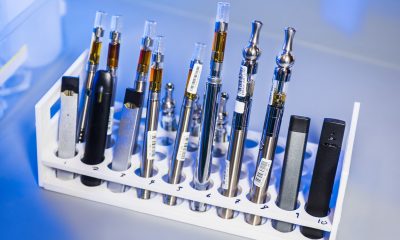Guide
Brief Guide on Different Types of Face Masks

Face masks are generally worn to protect the mouth and nose, and over the past two years, they have almost been indispensable as personal protective equipment. Following the incidence of COVID-19, face masks have become more popular. Major health institutions like the Centre for Disease Control and Prevention (CDC) and the World Health Organisation (WHO) have standardised the wearing of face masks to curtail the spread of the disease.
Face Mask Diversity
Diverse types of face masks have always existed before the advent of COVID-19. However, the pandemic made the use of face masks commonplace, resulting in the circulation of several types of face masks.
In this article, we’ll talk about the different types of face masks, but it’s important to mention that different face masks are designed to serve different purposes. For example, some face masks are designed simply for creating a barrier or a covering for the nose and mouth, some are used for surgical procedures, while some more sophisticated ones like the P2 N95 masks made in Australia are in the category of respirators and they function as effective filters for droplets.
The following is a list of the different types of face masks with their features.
Cloth masks
Cloth masks can be made from various fabric types, and research shows that they’re appreciably effective in preventing the spread of airborne infectious particles. Well-worn cloth masks with the proper layers can serve as effective choices for face covering. The WHO recommends that cloth masks should be three-layered. The layers should include:
- A non-absorbent outer layer made of materials like polyester.
- A non-absorbent middle layer made of non-woven material like polypropylene.
- An absorbent inner layer made of materials such as cotton.
Disposable procedure masks
Disposable procedure masks, also known as surgical masks, are made of plastic and paper. They can filter off germ-containing sprays, splashes, and large droplets when properly worn.
Surgical masks are specially used to provide a fluid barrier between the respiratory system and the environment. The recommendations of the CDC concerning disposable procedure masks include:
- A nose wire helps fix the mask properly on the nose ridge.
- Multiple layers increase the chances of the mask blocking out droplets.
- A proper fit around your mouth, chin, and nose.
Barrier face coverings
Barrier face coverings also help to provide some degree of protection to the mouth and nose as they can restrict the passage of airborne particles and provide source control. With barrier face coverings, you can reduce the number of particles you inhale from the atmosphere.
They are often made from various kinds of non-flammable materials. It is noteworthy to mention that barrier face coverings are unique in function, and there are recommendations that they must meet for standard recognition. Those recommendations include airflow resistance, particulate filtration, and leakage prevention.
Respirators
Respirators are effective in filtering out as high as 95% of airborne particles. There are different types of respirators, with the more common ones including N95 and KN95.
A unique property of respirators is that they are made to fit closely to the face. As a result, there are different types of N95 respirators and unique specifications.
For example, the P2 N95 masks made in Australia are composed of four protective layers and have high particle filtration efficiency. According to the CDC, “surgical” N95 respirators should also be reserved for healthcare workers due to their unique features. Some other respirators include the N99, N100, P95 respirators, etc.
Each type of face mask has unique features with a distinct level of protectiveness from airborne particles. Therefore, it would be best if you made your choices based on the specific needs you want the face masks to meet.

















